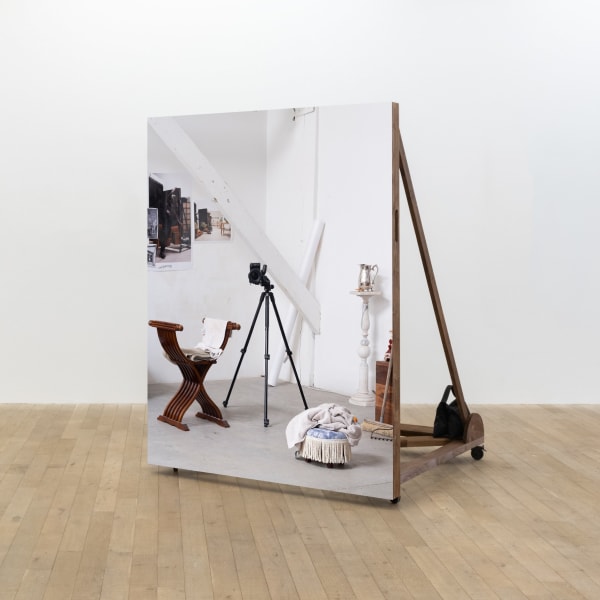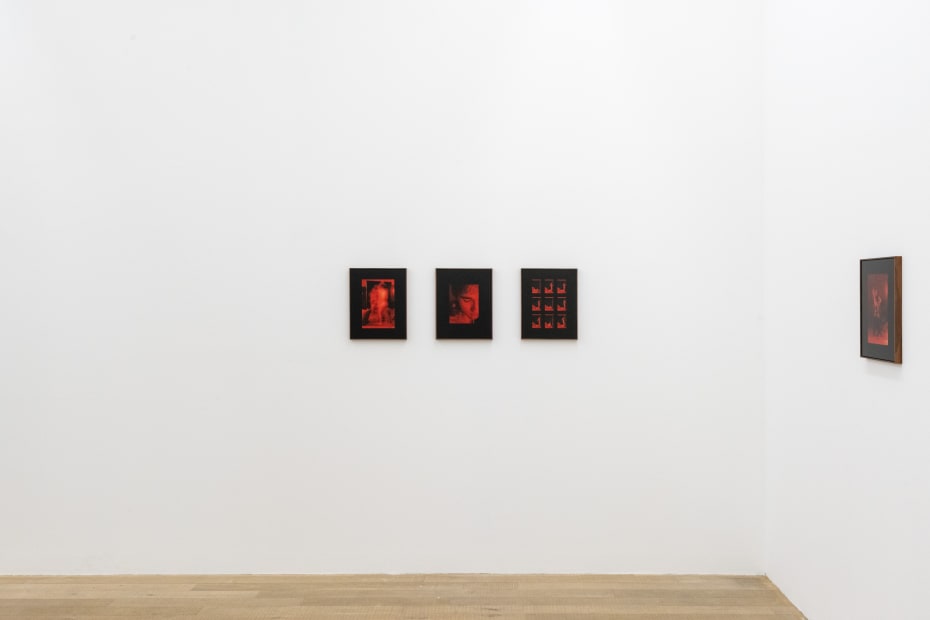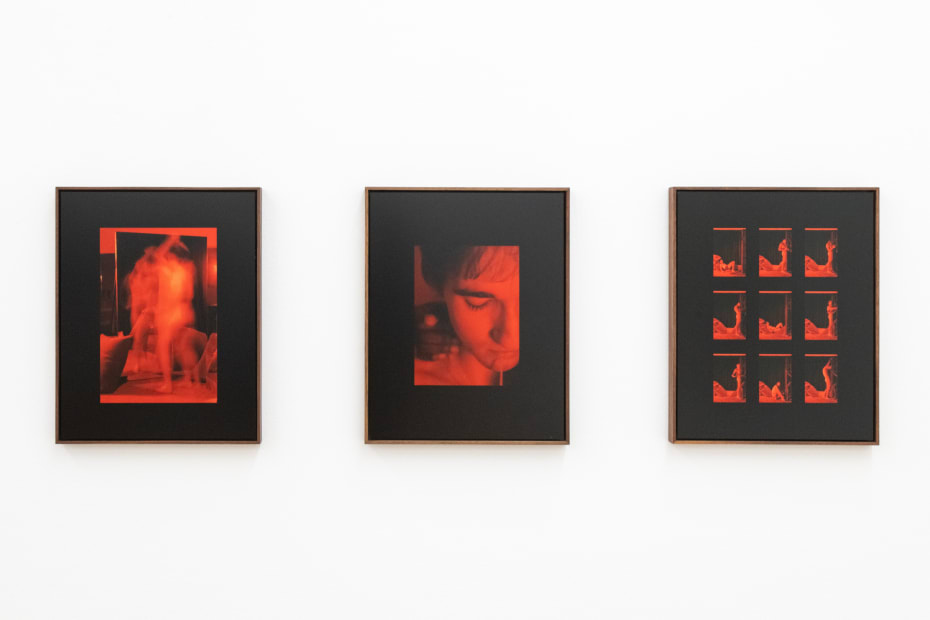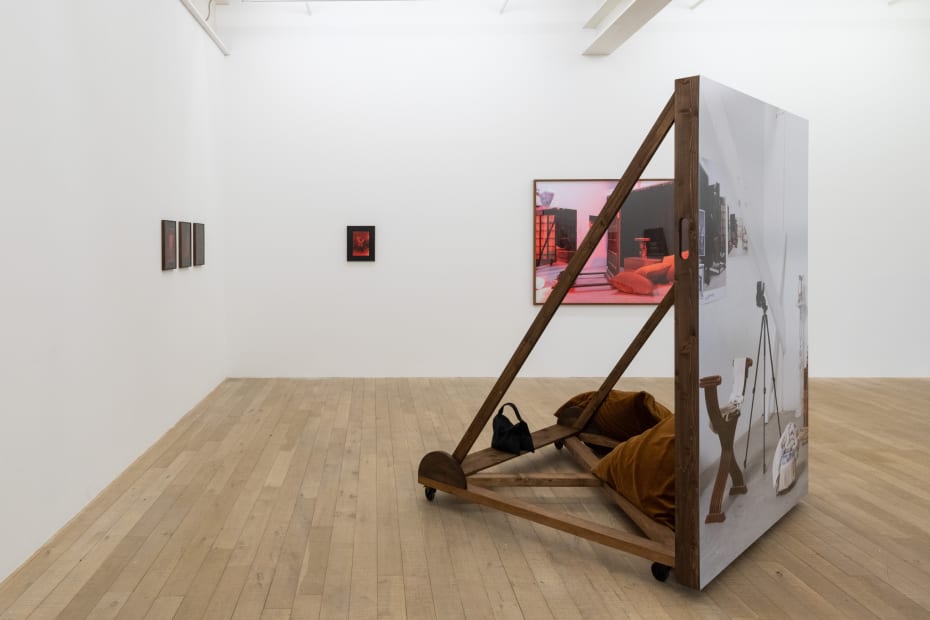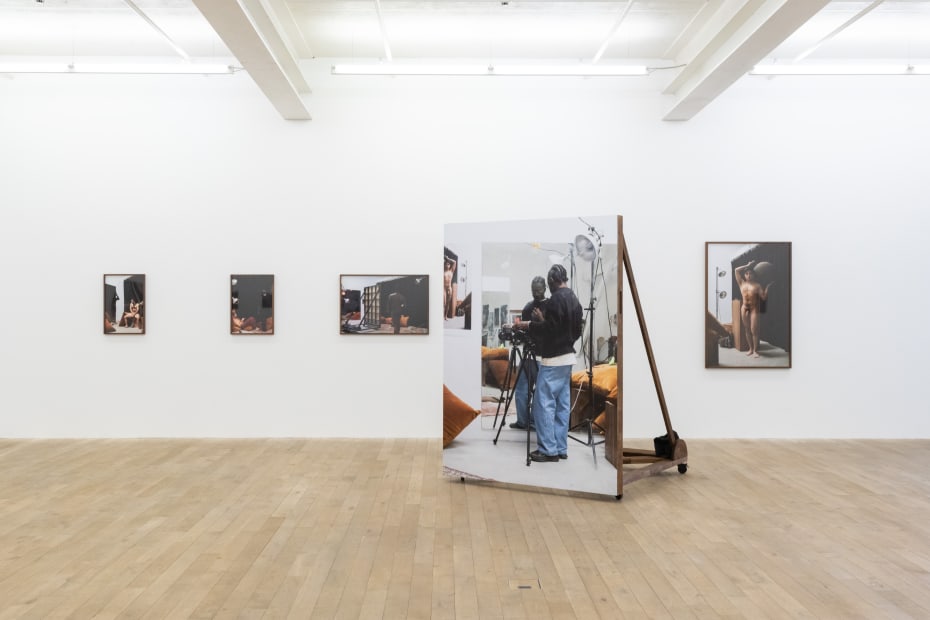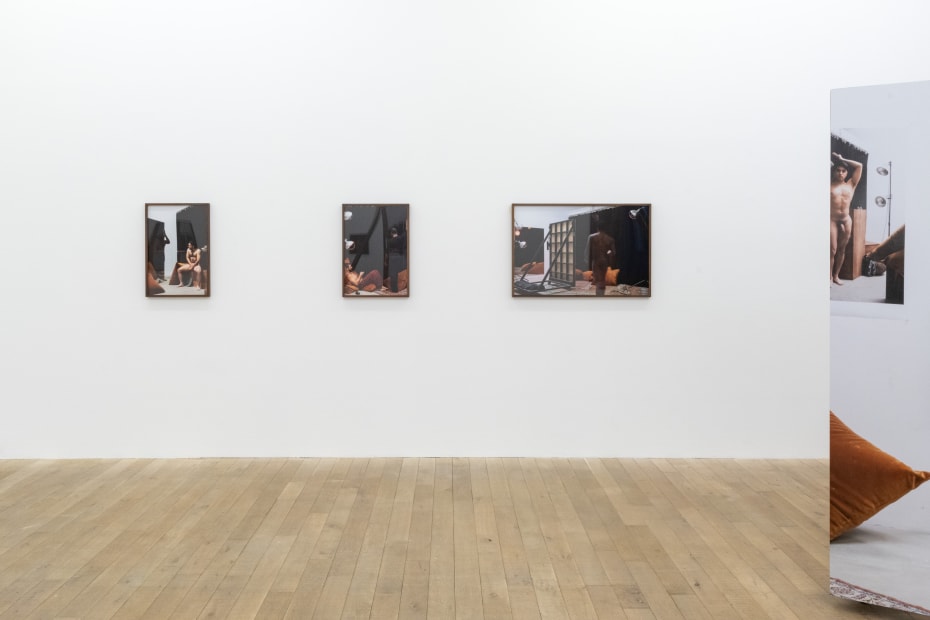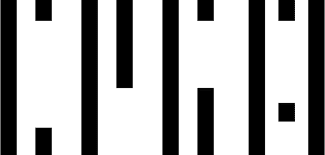Paul Mpagi Sepuya: Push/PullGalerie Peter Kilchmann
Zahnradstrasse, Zurich
Galerie Peter Kilchmann Zurich is pleased to present Push/Pull with Los-Angeles—based artist Paul Mpagi Sepuya. This marks the artist’s third outing with Galerie Peter Kilchmann.
Push/Pull is the latest in Sepuya’s project DAYLIGHT STUDIO / DARK ROOM STUDIO (2021 - ongoing), in which his anachronistic take on 19th and early 20th century Western European and American photo studios becomes a site for both playful and tensely charged interactions and reflections, bringing a contemporary Black and queer perspective to the origins of desire within the medium. The show consists of works from several connected bodies of work within the series: Daylight Studio, Twilight and Dark Room Studio. For the first time, the artist incorporates sculptural works consisting of dibond-mounted prints on wooden stages that populate the center of the exhibition space.
Sepuya moved studio spaces in the Spring of 2021 and found himself researching the decorative settings of early photographic studios. He then began filling his own new studio with items such as European and African antiques, postmodern contemporary reproductions, early 20th century gardening tools, rugs and pillows, and silverware against the backdrop of full-length black velvet curtains. The artist is not interested in historical recreation, but favors a form of play that acknowledges the impossibility of nostalgia. The accumulation of these objects and their references was a departure from the contemporary utilitarian aesthetic of his earlier Dark Room project, allowing further exploration into the dark room by bringing into focus the staging-ground of the historic daylight studio.
Within this mis-en-scène as a backdrop, Sepuya conducts photographic studies in arrangements of objects, model studies, as well as “instructional” compositions such as “Camera Lesson” and” Daylight Studio Session” where the artist is alternately technical instructor to one subject and figure model to another. The 1897 photograph An Ethiopian Chief by F. Holland Day with Black artist and model J. Alexandre Skeete has been a particular inspiration for Sepyua. J. Alexandre Skeete was a friend who white and wealthy Day staged as an homage to Emperor Menelek II. The revisiting of historic photographic subjects opens up the possibility to reinterpret their dynamics and what the limited Western photographic perspective might have missed to record appropriately in its own and other hemispheres.
Exhibitionism, objectification, sexual identity, and self-portrayal all manifest through the playful motivations of the various participants: friends who are often fellow artists, and the occasional anonymous stranger. The artist shifts between the role of model in front of and operator behind the camera, leveling the power dynamic between him and the contributors in his work. The artist’s camera appears in the photographs as a symbol of self-reflection while also implicating the viewer’s position outside of the image.
The impact and traces of these actions are visible in the disorderly placed furniture, dented pillows, and smudged mirror surfaces. Sepuya incorporates large-scale mirrors to counterbalance the composition of his shots and to reflect their setting. They create multilayered loops of perspectives and additional viewing angles through which the viewer can glimpse into the artist’s studio and onto its subjects. The impact and traces of these actions - such as gently pushing and pulling each other - are the origin of the show’s title Push/Pull. Repeatedly touching, conditioning, and thus changing the surface of an object to reach clarity has been at the forefront of the artist’s mind while working on this new body of work.
In the 19th Century the daylight studio served as the photographer’s designated site for the exposing of photographs in tandem with the dark room where the prints would be developed and produced. The dark room is also the designated site of queer sexual exploration and sociality, a location where the senses are conditioned by red and amber light (safe lights) for the bringing forth of touch and vision. Across “Daylight Studio”, “Twilight Studio” and “Dark Room Studio” images, Sepuya introduces these shifting conditions of light as potential for combining and recombining the kinds of pictures that can be made within the studio. Dark Room Studio images are made with long exposure within the glow of the red lights. A number of small formats are produced on aluminum as deeply saturated dye-sublimation prints.
The Garden Prints (in the office showrooms) are cyanotype prints made from snapshots the artist took while establishing a garden at his home in Los Angeles, a reference to Hippolyte Bayard’s Garden photographs. Bayard’s garden, like those of many other early practitioners and amateurs, was the site of many early photographs, for its abundance of light. In working on his own garden, the artist contemplated forms of labor that become pleasure and the rewards of tending to the deep social relations that make his work possible.
Within these series Paul Mpagi Sepuya creates a rich variety of contemporary studio photography that transforms its historical referents, each increasing the depth of the conceptual approa Push/Pull runs concurrently with LUSTRER, a solo exhibition with works from the same series that opened on June 03, 2023, at Galerie Peter Kilchmann in Paris. The title LUSTRER links to the rich history of Paris in which silver played a dominant role not only in aristocratic circles and the bourgeoisie but also as the cradle ground of early photography and the importance of silver to early photo production.
Paul Mpagi Sepuya (b. 1982, San Bernardino, CA) lives and works in Los Angeles. His work is in the collections of The Museum of Modern Art, the Whitney and Guggenheim Museums, The Studio Museum in Harlem, ICA Boston, The Getty Museum, MOCA Los Angeles, IMMA Dublin, and Stedelijk Museum Amsterdam among others. His work has been reviewed in the New Yorker, the New York Times, Art in America, and he was featured on the cover of Artforum’s March 2019 issue. Sepuya has recently been in a solo exhibition at Deichtorhalle, Hamburg (2022); Festival of Photography, Melbourne, AU, 2022 and has been in group exhibitions at MOCA, Los Angeles, US, 2022; the Barbican, London (2020); Whitney Museum, New York; Guggenheim Museum, New York, and the Getty Museum, Los Angeles (all 2019); Museum of Modern Art, New York; Museum of Contemporary Art, Chicago (both 2018); New Museum, New York (2017); and many more. A survey of work from 2008 - 2018 was presented at CAM St. Louis and University of Houston Blaffer Art Museum, accompanied by a monograph published by CAM St. Louis and Aperture Foundation. He is Acting Associate Professor in Media Arts at the University of California San Diego.
The artist will be present during the opening.
There will be a walkthrough with the artist and curator & art historian Raphael Gygax, on Sunday, June 11, at 2pm.



